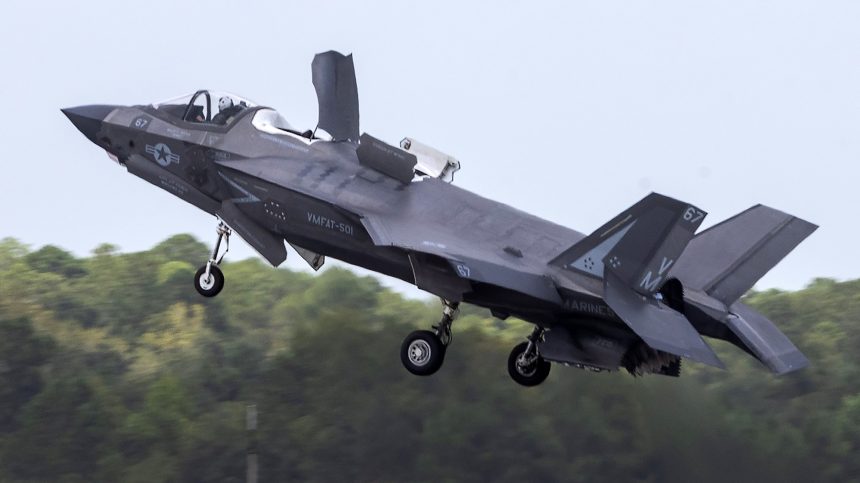The 2023 crash of the F-35B, which continued flying for 64 miles after the pilot ejected, was attributed to pilot error. The investigation revealed that the pilot followed an appropriate emergency procedure for a loss of control. However, the flight manual also contributed to the incident due to an imprecise definition.
Over a year later, the U.S. Marine Corps has finally released the findings of the investigation into the bizarre incident in which an F-35B continued flying for 64 nautical miles after the pilot ejected, eventually crashing in a field in South Carolina. The incident drew widespread public and media attention, as the aircraft was missing for nearly 30 hours, prompting the military to appeal to the public for assistance in locating the stealth jet.
The mishap is now attributed to pilot error, following a series of malfunctions and spatial disorientation in poor weather conditions. The pilot has since identified himself to the media, stating that he was dismissed from his new assignment as a result of the crash, despite being cleared of all accusations.
There is much to unpack, so let’s start from the beginning and review everything we know about this unusual incident.
The crash
On Sept. 17, 2023, two USMC F-35Bs, callsigns “SWEDE 11” and “SWEDE 12,” assigned to Marine Fighter Attack Training Squadron (VMFAT) 501, took off at about 12:45 p.m. to practice basic fighter maneuvering. The flight has been defined “uneventful”, although through heavy rain and mist.
At about 1:25 p.m., the report said, the aircraft turned towards Joint Base Charleston, South Carolina, with the air traffic control directing the two F-35s around the weather towards their final approach course. While on final approach, “SWEDE 11” converted to the Short-Take Off and Vertical Landing (STOVL) mode and radioed the info to the wingman. Here the aircraft started experiencing the first malfunctions, with the radio failing after this communication.
Then, the pilot’s Helmet Mounted Display (HMD) started flickering out and back in, the report said, with the pilot adding that each time his HMD went out, the panoramic display in the cockpit stopped working too. Because of this, “SWEDE 11” initiated a missed approach procedure, climbing away to evaluate the situation, and realized the loss of communication.
To go along with the ATC audio put together by Aeroscout, here’s the full radio traffic from Charleston County EMS/Fire for the #F35 pilot ejection beginning from the initial dispatch until they cleared the scene.
Units: Medic 8 (Charleston County EMS), Engine 210 (North… https://t.co/zzJiybqlOy pic.twitter.com/6HY4CAg7jF
— ☈ Chris Jackson ☈ (@ChrisJacksonSC) September 19, 2023
As the HMD resumed working, multiple warning signs flashed and blared, and then it stopped working again. The pilot found himself in the situation where he was not sure the F-35 was correctly converting back to the conventional flight mode (the report states the aircraft systems recorded the completion of the conversion only after the ejection), in a heavy rainstorm and without the main instruments, as the HMD and panoramic display failed three times.
The F-35B’s flight manual says, according to the report, that “the aircraft is considered to be in out of controlled flight (OCF) when it fails to respond properly to pilot inputs,” adding in multiple sections ““if out of control below 6000 feet AGL, eject.” The pilot of “SWEDE 11”, feeling the aircraft was out of control, decided to eject at an altitude of about 1,900 feet at 1:32 p.m.
The pilot said to investigators that his helmet and mask were “ripped off” as he ejected. Realizing he was over a residential area, he released his seat pan and raft to avoid getting tangled in the nearby power lines and steered into a safe area. Once on the ground, he identified himself with local residents and asked them to call 911, mentioning he wasn’t sure where the aircraft ended up.
The F-35B, in fact, was still flying and kept going for more than 11 minutes after the ejection. As the aircraft was still missing, the military, law enforcement, Civil Air Patrol and the Federal Aviation Administration focused the search in the area north of Charleston, until it was located in the afternoon of Sept. 18.
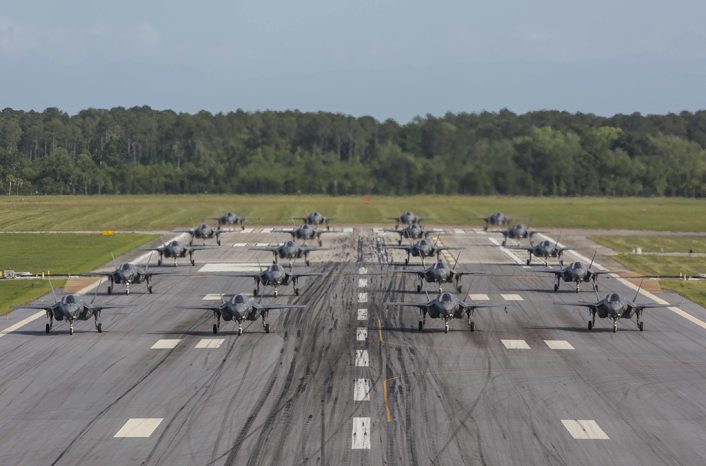
The Marine’s statement
At the end of the investigation into the mishap by the 2nd Marine Aircraft Wing (MAW) investigating officer and the unit’s commanding general’s endorsement, the service released a statement with the findings on Oct. 31, 2024.
The statement begins with a summary of the events that led to the crash:
On the afternoon of Sept. 17, 2023, a U.S. Marine Corps F-35B Lightning II Joint Strike Fighter, assigned to Marine Fighter Attack Training Squadron (VMFAT) 501, 2nd MAW, crashed in South Carolina. The pilot safely ejected from the aircraft while attempting to execute a climbout during a missed approach in instrument meteorological conditions and heavy precipitation near Joint Base Charleston, South Carolina. The aircraft continued to fly unmanned for 11 minutes and 21 seconds before impacting in a rural area approximately 64 nautical miles northeast of the airfield in Williamsburg County, South Carolina.
Then, the statement continues with the attribution of the fault to pilot error, mentioning he became disoriented in challenging meteorological conditions and incorrectly diagnosed the situation:
The Marine Corps thoroughly investigates all mishaps to identify the causes, learn from them, and take action to reduce the chances of future mishaps. The investigation concluded that the mishap occurred due to pilot error. The pilot incorrectly diagnosed an out-of-controlled flight emergency and ejected from a flyable aircraft, albeit during a heavy rainstorm compounded with aircraft electrical and display malfunctions.
Contributing factors to the mishap included an electrical event during flight, which induced failures of both primary radios, the transponder, the tactical air navigation system, and the instrument landing system; and the probability that the helmet-mounted display and panoramic cockpit display were not operational for at least three distinct periods. This caused the pilot to become disoriented in challenging instrument and meteorological conditions. This electrical malfunction was not related to any maintenance activities. All preventative, scheduled, and unscheduled maintenance conducted on the aircraft was correct and in keeping with established standards.
The pilot was qualified and current to conduct the scheduled flight. The flight was scheduled, planned, briefed, and conducted properly, professionally, and in accordance with applicable orders and directives. The forecasted and observed weather at the time of the mishap supported the decision to land back at Joint Base Charleston.

The statement also included the investigation into what happened after the ejection, mentioning why the F-35B flew so long without a pilot, why it could not be found and the actions after the identification of the crash site:
The investigation concludes the mishap aircraft’s extended unmanned flight was due to stability provided by the F-35’s advanced automatic flight-control systems.
The loss of positive radar contact with the mishap aircraft resulted from a failed transponder caused by the electrical malfunction and the aircraft’s eventual descent below the air-traffic control radar horizon. The loss of positive contact could also be partially attributed to the F-35B’s low-observable technology.
The crash site was located at approximately 4:45 p.m., Sept. 18, 2023. Personnel with the U.S. Navy Region Southeast On-Scene Coordinator team, Marine Corps Air Station Beaufort, Joint Base Charleston, and 2nd MAW conducted the aircraft recovery, environmental-cleanup, and remediation efforts. Recovery and cleanup efforts began Sept. 19, 2023. The goal was for the impacted area to be free of contaminants and the conditions set for natural growth. Environmental remediation of the area included removal of affected crops, underbrush, and trees to remove the wreckage and limit further environmental impacts. The government’s environmental cleanup efforts were sufficient and in keeping with established procedures.
In the final remarks, the statement says that the investigation did not require action against the pilot:
The mishap resulted in no ground-related injuries, but it did result in property damage in the form of lost forested land and crops. There were no punitive actions recommended.
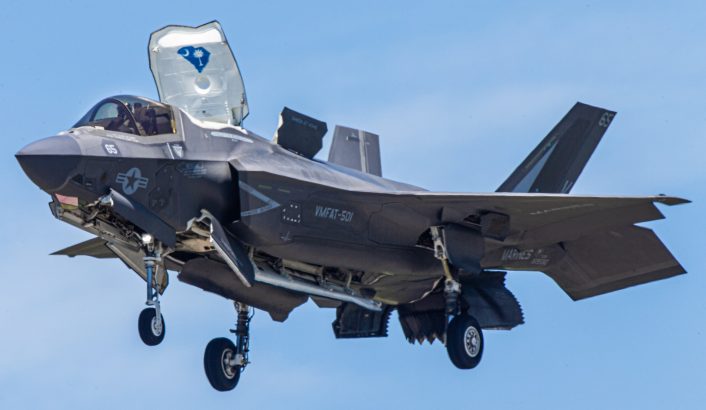
A bit of controversy – part 1
The statement we just cited is the final version published by the USMC. However, the initial one included details which were later removed. Some publications released the original variant and were asked by the service to edit their articles to reflect the most recent press release, although the editors decided to keep online both versions for accuracy of the information.
Here is the original one:
The investigation concluded the pilot’s decision to eject was ultimately inappropriate because commanded-flight inputs were in progress at the time of ejection, standby flight instrumentation was providing accurate data, and the aircraft’s backup radio was, at least partially, functional. Furthermore, the aircraft continued to fly for an extended period after ejection.
And here is the final one:
The investigation concluded that the mishap occurred due to pilot error. The pilot incorrectly diagnosed an out-of-controlled flight emergency and ejected from a flyable aircraft, albeit during a heavy rainstorm compounded with aircraft electrical and display malfunctions.
It is worth noting that the original version is a quote of the report’s contents, freely available to the public.
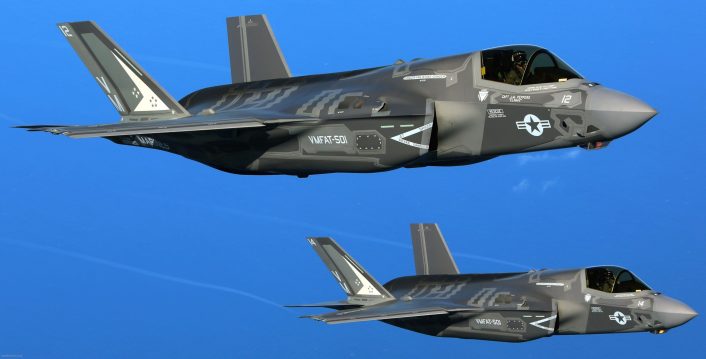
A bit of controversy – part 2
As we mentioned earlier, the report says the pilot followed the manual and “applied an appropriate emergency procedure in response to a perceived loss of aircraft control below 6,000 feet.” In fact, the instruction on the manual says the aircraft is considered out of control if it is not responding properly to the pilot’s inputs, and a pilot should eject from the aircraft if it is out of control below 6,000 feet.
The investigation’s findings, however, in addition to criticizing the pilot, also place blame on the manual. In fact, the report states “the F-35B flight manual definition for [out-of-control flight] is too broad and contributed to this mishap.”
The report further detailed the matter, stating that the Out of Controlled Flight Emergency Procedure “generally focuses on unresponsiveness to pitch, roll, and yaw inputs and does not address unresponsiveness to commanded changes in the thrust vector,” adding that the latter problem is addressed in other procedures. The investigators therefore recommended a change to the manual, specifying that the aircraft is out of control when it fails to respond to pitch, roll and yaw inputs.
The pilot
The investigation’s final report released to the public was redacted to remove all the sensitive information about the aircraft, its systems and the pilot. The latter, however, came forward and sent a written statement to Marine Corps Times, identifying himself as Col. Charles “Tre” Del Pizzo.
According to Marine Corps Times, Del Pizzo is an experienced aviator with more than 2,800 flight hours and six deployments under his belt over 27 years. Del Pizzo started his career as an enlisted Marine and later commissioned as an officer, becoming a naval aviator in 1999.
Formerly an AV-8B Harrier pilot, Del Pizzo later transitioned to the F-35B and had 32 flight hours to his active. He also served as the service’s deputy at the F-35 Joint Program Office and the tactical air branch head at Marine Corps Aviation.
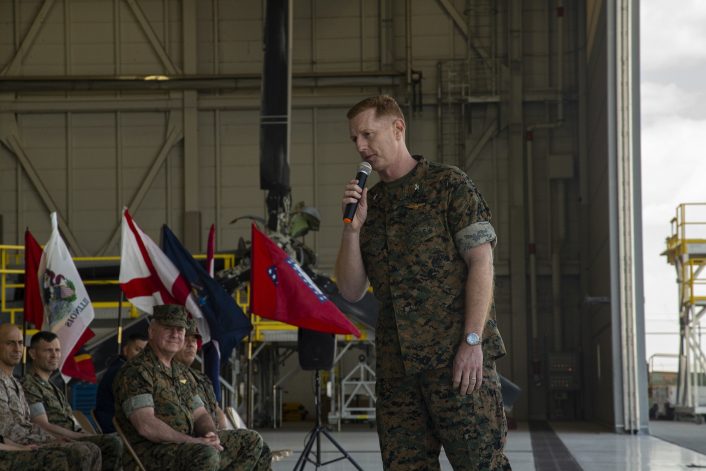
Consequences for the pilot
According to Marine Corps Times, in August 2022, Del Pizzo was selected for a prestigious assignment: command of the Marine Test and Evaluation Squadron (VMX) 1 at Marine Corps Air Station Yuma, Arizona. He took command of the unit on Jun. 21, 2024, almost a year after the F-35B mishap.
The investigation, although it blamed Del Pizzo for the crash, cleared him of further consequences mentioning that the mishap was not due to dereliction of duty on his behalf, without recommending punitive actions. Because of this, Military.com reported that he received reassurance from the USMC that the mishap and its subsequent investigation would not hinder his ability to take command.
However, on Oct. 2, just three months later, Del Pizzo was relieved of command as Lt. Gen. Bradford Gering, deputy commandant for aviation, was ordered by Commandant of the Marine Corps Gen. Eric Smith to fire him after reviewing the report on the crash investigation, said Del Pizzo in his statement. The service confirmed to Marine Corps Times that the decision indeed came from Smith.
“The commandant of the Marine Corps continually assesses matters associated with commanders and their units,” Marine Corps spokesman Lt. Col. Joshua Benson said. “Following his detailed review [in September] of the command investigation into the 17 September 2023 F-35 mishap, he made the decision to relieve the commanding officer of [VMX-1], due to the unique mission of VMX-1.”
The official reason he was relieved of command, according to Marine Corps Times, “for loss of trust and confidence in his ability to execute the responsibilities of his command.” Del Pizzo responded to the decision: “As a commander you serve at the pleasure of the commandant. It was an absolute privilege to have the opportunity to lead the Marines, sailors and civilians of VMX-1.”
Before the decision, Smith visited VMX-1 in late July, after Del Pizzo took command of the unit. Del Pizzo also mentioned in statement that a Field Flight Performance Board found that his decision to eject “was justified,” and he returned to full flight status in June before taking command.
The officer says he has now been offered his choice of follow-on assignments and he is evaluating the decision with his family.
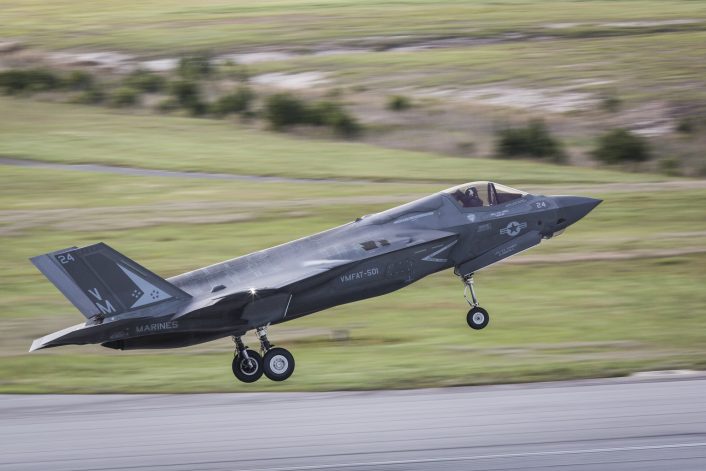
Spatial Disorientation
Spatial disorientation is a common cause for many aviation mishaps. In September we reported how this phenomenon caused an U.S. Air Force F-16C crash in South Korea. Here’s how we described it:
Spatial disorientation (SD) is a significant factor in aviation accidents, and NATO describes it as a failure to maintain spatial orientation (SO), a fundamental human behavior that integrates multiple sensory and motor systems in the brain. When SD occurs in a flight environment, it can have catastrophic consequences. Over the years, studies have attributed 25 to 35% of serious aviation accidents and 25 to 50% of fatalities to SD, a statistic that has remained consistent despite ongoing efforts to address the issue.
NATO refers to a widely accepted definition by Benson, which describes SD as a situation where “a pilot fails to sense correctly the position, motion, or attitude of himself or his aircraft within the fixed coordinate system provided by the surface of the earth and the gravitational vertical.” This definition emphasizes that SD doesn’t refer to simply getting lost, but includes scenarios where a pilot misjudges their aircraft’s position, such as impacting an object they were aware of but miscalculated.
Historically, terms like “aviator’s vertigo” or “pilot vertigo” were used to describe what is now known as SD. During World War II, the concept of “Loss of Situational Awareness” (LSA) emerged, which included disorientation and a lack of understanding of the pilot’s position. While SD and LSA are related, they aren’t identical—SD always involves LSA, but LSA can occur without SD. Efforts to mitigate the dangers of SD date back to the early days of aviation, with early countermeasures focusing on training rather than technical advancements.
Despite technological and procedural improvements, SD remains a persistent issue in aviation. As NATO underscores, SD represents a failure of pilots to accurately perceive their aircraft’s orientation relative to the earth, often leading to dangerous miscalculations that can result in accidents.
In its report, Military.com asked two experts for their comments on the matter. The first, former Air Force Reserve Lt. Col. John Nance, said that every aviation can experience SD, with bad weather and poor visibility making it worse.
“All you can do is go to your instruments, try desperately to make your mind believe what the instruments are telling you versus what your physiology is telling you, and go from there,” Nance said. “Can spatial disorientation on top of a very difficult flight be a factor, and certainly a factor, in making the wrong decision? Absolutely.”
The second expert is retired USMC Col. J.F. Joseph, also a pilot like Nance, who mentioned that pilots experiencing SD should try their best to stay calm in similar situations. He also added that it’s hard to criticize an aviator’s skill just because they suffered SD.
“I think most pilots have experienced it at one time or another,” Joseph said. “Just because somebody experiences spatial disorientation doesn’t mean they’re a bad pilot or anything else.”

